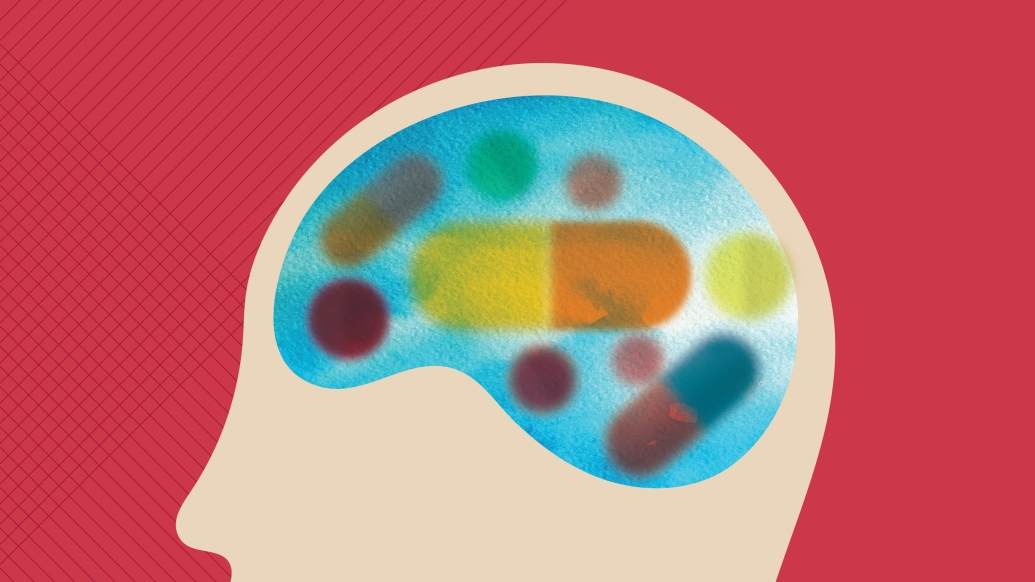A movement disorders specialist explains the different types of Parkinson’s medications, their side effects and how they can help manage symptoms.
7:00 AM
Author |

If you have Parkinson's disease, there aren't any treatments that can slow, reverse or stop the condition's progression. But although there is no cure, more than a dozen medications can help patients manage symptoms.
MORE FROM MICHIGAN: Sign up for our weekly newsletter
Our goals when prescribing medications for Parkinson's disease are twofold: to improve day-to-day functioning and quality of life and to keep people functioning as long as possible. Hopefully, your physician has the same goals in mind for you.
In the University of Michigan clinic, we work with people individually to find the best medication for them. Here's an overview to help you manage your care.
Picking a Parkinson's medication
When assessing which medications will work best, we ask patients the following questions:
-
Are you able to do what you want to do?
-
Are the medications you are taking now wearing off before the next dose?
-
Do your medications have side effects? If so, what are they?
-
Are you having dyskinesias (extra involuntary movements)? If so, how bothersome are they to you?
Based on the answers to those questions and the medical exam, we choose a medication from the following list:
Carbidopa-levodopa (Sinemet): The most effective and well-tolerated drug the medical profession has to offer at this time is carbidopa-levodopa. It often helps with bradykinesia (rigidity and rest tremor). It generally does not help with imbalance or falls, freezing and non-motor symptoms.
Side effects include:
-
Dyskinesia (abnormal, involuntary movements)
-
Nausea
-
Hallucinations
-
Confusion
-
Lightheadedness
Patients should also be aware of these important dosing instructions:
-
Take 30 minutes prior to meals (note that a high-protein diet may decrease absorption of the drug).
-
Generally, do not take it right before bed unless you need it overnight to reduce cramping or restless leg syndrome.
-
Consistent timing is important. If you miss a dose, your symptoms may return.
Sinemet controlled-release tab: This drug can be given at night to help with early morning symptoms, or it may be used instead of the immediate-release version to decrease nausea.
-
It has not been shown to help treat motor fluctuations (variable "on-and-off," early morning "off," etc.) and dyskinesia.
Rytary: This drug is a new, long-acting carbidopa-levodopa.
-
It provides an extra one to two hours of "on" time per day compared with regular Sinemet.
-
Rytary is not available in a generic version, so it may be expensive. Some insurance companies do cover it.
Dopamine agonists (pramipexole, ropinirole, rotigotine patch): There is good evidence to support that these medications work by themselves or in combination with Sinemet. If they are used in combination, it helps prolong the effect of the Sinemet.
-
Significant side effects can limit their use, including:
-
Nausea
-
Dizziness
-
Leg swelling
-
Sleepiness and sleep attacks
-
Worsening cognition
-
Hallucinations
-
Impulse control disorders
Apomorphine: Effective in patients with severe motor fluctuations, it can be useful to get patients going in the early morning or during "off" times.
-
This medication is injected, which many people don't like. In addition, it can cause severe nausea, so it requires scheduled anti-nausea therapy. The first dose will need to be monitored in the office to ensure safety, tolerability and adequate dosing.
SEE ALSO: Deep Brain Stimulation for Parkinson's Disease: Is It Right for You?
MAO-B inhibitors (selegiline, rasagiline): These may have a mild symptomatic benefit early in the course of Parkinson's disease.
-
Similar to dopamine agonists, this medication may help to smooth the motor fluctuations in advanced disease.
-
They may also be used with Sinemet to prolong the action of the Sinemet.
-
Many people with Parkinson's have mood disorders, and there could be a drug interaction if these medications are taken with certain antidepressants. Patients should be watched closely.
COMT inhibitors (entacapone, tolcapone): These drugs decrease "wearing off" in advanced disease.
-
They may make the side effects of carbidopa-levadopa worse.
Amantadine: This may have a modest effect on motor symptoms in early Parkinson's, but it is particularly helpful with treating dyskinesia.
-
Cognitive (thinking and memory) side effects may limit its use.
Trihexyphenidyl (Artane): This can be helpful in treating rest tremor if refractory to Sinemet and dopamine agonists, but side effects may limit its use.
Nonpharmacologic treatments
If you have a neurologist, he or she will harp on exercise, exercise, exercise. People with Parkinson's disease who participate in exercise and exercise therapies will improve their ability to function. We encourage 30 minutes of activity every day.
Speech therapy is also beneficial because patients often develop a soft voice, and they can learn how to project their voice. Such therapy may also help if they develop swallowing problems.
For more information, watch Dr. Wyant's talk from the University of Michigan's 2016 Parkinson's & You Symposium.

Explore a variety of health care news & stories by visiting the Health Lab home page for more articles.

Department of Communication at Michigan Medicine
Want top health & research news weekly? Sign up for Health Lab’s newsletters today!





